The Blue Duck is a species of endangered waterfowl that lives in New Zealand. This species, also known as “Whios,” are the only members of their taxonomic genus. Researchers believe that their closest relatives are the Dabbling Ducks.
Sadly, habitat destruction pushes this unique duck species towards extinction. Read on to learn about the Blue Duck.
Description of the Blue Duck
Blue Ducks are smaller birds that generally measure about 21 in. long and weigh about 1.5 lbs. or so. Despite their name, these ducks do not have bright blue plumage, or feathers.
Instead, their plumage is a dark blue/grey, and they have dark red feathers on their chests. Compared to their dark feathers, their light pink bills appear nearly white. They also have light yellow colored eyes.
Interesting Facts About the Blue Duck
These scarce little ducks have several different traits and adaptations that make them unique. Learn more about them below.
- Dedicated Dads – In most duck species, males do not remain with the female to raise the chicks. However, Blues are very dedicated fathers. Males and females work together to raise and protect their broods. Most pairs also stay together year-round to protect their shared territories.
- Curious Coloration – When they first hatch, Blue ducklings have green-colored bills. This color eventually fades as their bills change to their adult light pink color.
- Whio – Like many other bird species, the Blues’ nickname comes from its call. Male Blues whistle to their ladies and to proclaim their territory.
- Insidious Invasion – Unfortunately for Blue Ducks, invasive species severely threaten their populations. Humans brought rats, dogs, cats, stoats, weasels, and more to New Zealand. All of these creatures kill Blues or their ducklings and cause population decline.
Habitat of the Blue Duck
This duck species lives almost exclusively along mountain streams and rivers. Sadly, these birds live primarily in these regions because humans have destroyed their previous habitats. They live only in regions with rivers or streams, preferably those with clear water and no sediment or mud.
Along the edges of the rivers and streams they utilize scrubs and woodlands to hide from predators. In many areas humans have cleared the surrounding area and the ducks fall prey to native and non-native predators.
Distribution of the Blue Duck
These ducks live only in New Zealand. Historically, they inhabited a much wider range across the islands, but now they live only in a few isolated regions.
A few isolated populations live in central and eastern North Island, and along the western coast of South Island. Most of the population decline and reduction of this duck’s range has occurred over the past 100 years or so.
Diet of the Blue Duck
These ducks are insectivores, which means they only eat insects and invertebrates. Their favorite prey items are insect larvae, but they also eat snails, and small insects. They eat mostly mayfly, stonefly, and caddisfly larvae.
Most of their hunting occurs in the water, where they capture insects during their larval and nymph stages. Researchers have spotted Blues feeding on berries and fruits near the water on occasion as well.
Blue Duck and Human Interaction
Human activity directly threatens this species of duck. Their primary danger is habitat destruction for agricultural use and urbanization.
Invasive species cause population decline as well, by hunting the ducks and their young, and by destroying their nests. Some introduced species, like trout, compete with Blues for food. The IUCN lists this species as Endangered and their population is still in decline.
Domestication
Humans have not domesticated Blue Ducks in any way.
Does the Blue Duck Make a Good Pet
No, these ducks do not make good pets. These birds could potentially go extinct in the next decade if we do not protect their populations and their habitat. This means that every bird is important for the survival of the species. Because of this, it is illegal to own a Blue Duck as a pet.
Blue Duck Care
The only Blue Ducks in zoos and similar facilities are in New Zealand. Researchers created a captive breeding program to collect eggs, to raise and breed these ducks, and to release the birds back into the wild.
At these facilities the zookeepers feed and care for the ducks and provide them with a safe place to live. Their enclosures are safe from predators, while giving them plenty of space to swim and forage, and plenty of food. The program selects ducks to pair and breed so that their offspring have the greatest genetic diversity.
Behavior of the Blue Duck
This species is not particularly social, but they do live in breeding pairs. The pairs live together year-round and maintain a territory. They protect their territories from other ducks, and the best territories have plenty of food and good nesting locations.
Blues are crepuscular, or active in the early morning and late afternoon. They spend their most active times foraging in rivers and streams, patrolling their territory, grooming, and vocalizing.
Reproduction of the Blue Duck
The Blue Duck is monogamous, and pairs continue to breed year after year. The Female builds the nest, and incubates the eggs. She chooses an area along the riverbank with dense vegetation, or a cave to build her nest.
Most clutches contain about five eggs, and it takes approximately one month for the eggs to hatch. While the female incubates the eggs, the male protects her and the nest from threats. Once they hatch, it takes anywhere from eight to ten weeks for the ducklings to reach independence.

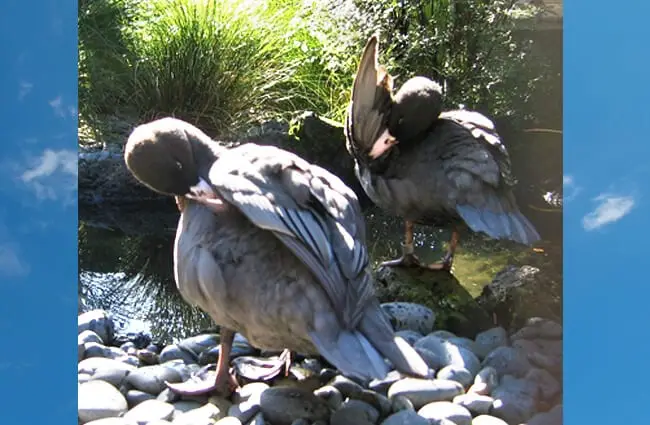
![A Whio (Blue Duck), at Staglands in Akatarawa, New Zealand A Whio (Blue Duck)Photo by: Karora [Public domain]](https://animals.net/wp-content/uploads/2019/07/Blue-Duck-4-650x425.jpg)
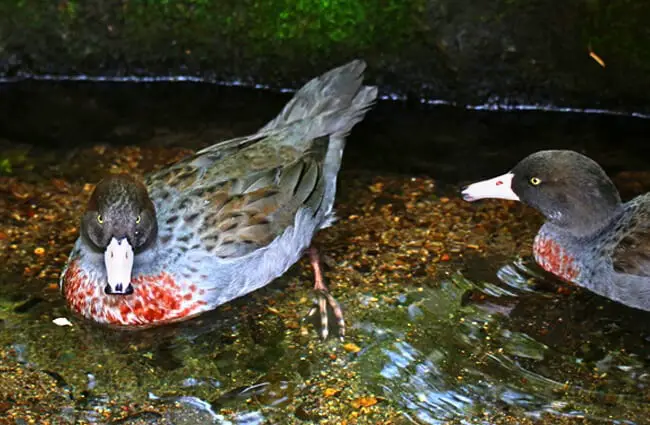
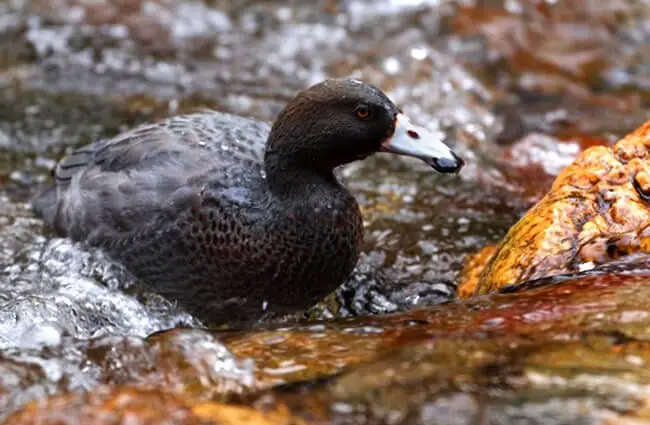
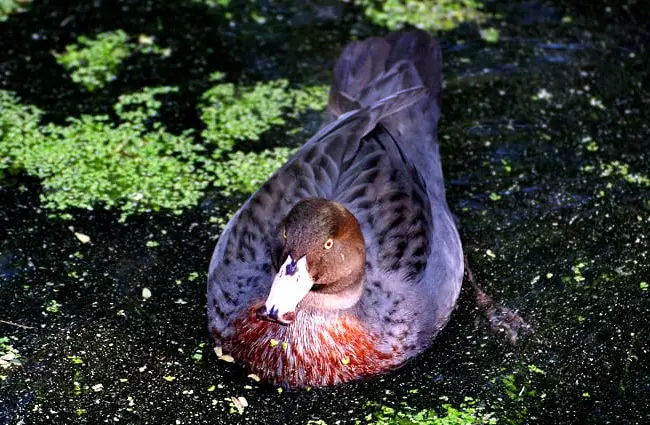
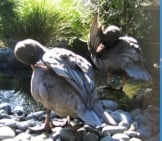
![A Whio (Blue Duck), at Staglands in Akatarawa, New Zealand A Whio (Blue Duck)Photo By: Karora [Public Domain]](https://animals.net/wp-content/uploads/2019/07/Blue-Duck-4-162x141.jpg)


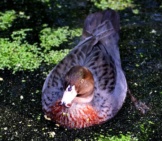
![Red Angus Closeup of a beautiful Red Angus cowPhoto by: U.S. Department of Agriculture [pubic domain]https://creativecommons.org/licenses/by/2.0/](https://animals.net/wp-content/uploads/2020/03/Red-Angus-4-238x178.jpg)












![Red Angus Closeup of a beautiful Red Angus cowPhoto by: U.S. Department of Agriculture [pubic domain]https://creativecommons.org/licenses/by/2.0/](https://animals.net/wp-content/uploads/2020/03/Red-Angus-4-100x75.jpg)

